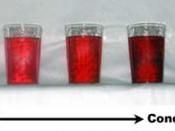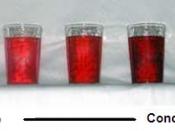According to the Environmental Data Standards Council, a serial dilution is a numerical factor representing the number of equal volumes of diluent added to a sample (EDSC, 1). The process involving serial dilution is used to set up a series of different sample concentrations for an experiment. To accomplish this, a high concentration of sample is used as a starting point. A measured amount of sample is transferred to another well and mixed with dilution solvent, creating a lower concentration. For example, if 10 micro liters of sample is mixed with 90 micro liters of solvent, the resulting liquid will be 10% as concentrated. This is called a 1:10 dilution. Frequently in lab you may need several concentrations of the same solution. The most precise, according to some biologists, a user-friendly way of making many concentrations of a single solution is to perform are serial dilutions (Abedon, 1-4). For over two hundred years there have been records of scientists using this type of method to study bacterial growth and its effects.
Serial dilutions seemed to be faster and more exact than making a new patch of solution every time it is required (BAHVS, 1).
Christian Friedrich Samuel Hahnemann, in the late nineteenth century flirted with the idea of using serial dilutions in the development of creating cures for pathogen diseases such as malaria. Using himself as a specimen, he used serial dilutions for quick and readily available methods of experimentation. With the help of using the method of serial dilutions, Dr. Hahnemann was able to start the branch of science known as homeopathy (1).
The process of dilution in a series simply means repeating what a simple dilution is. A simple dilution is one in which a unit volume of a liquid material of interest is combined with an...


